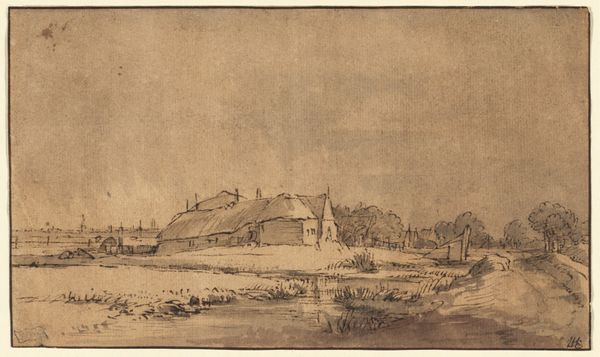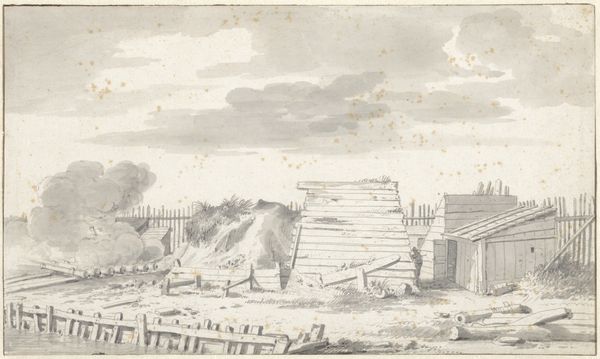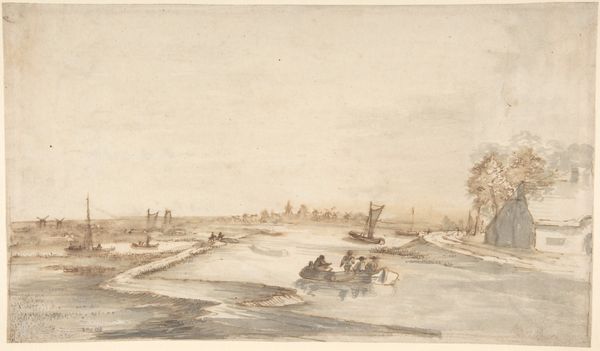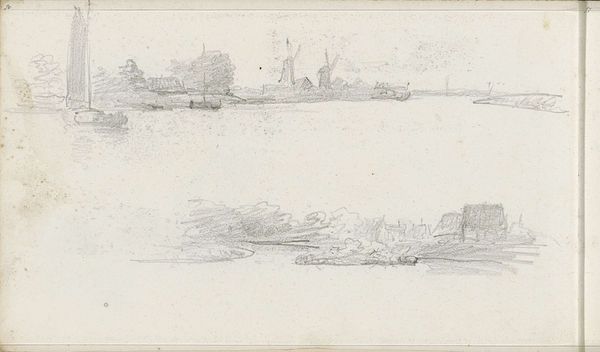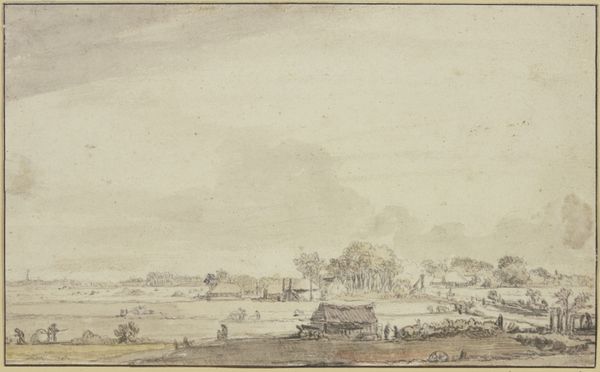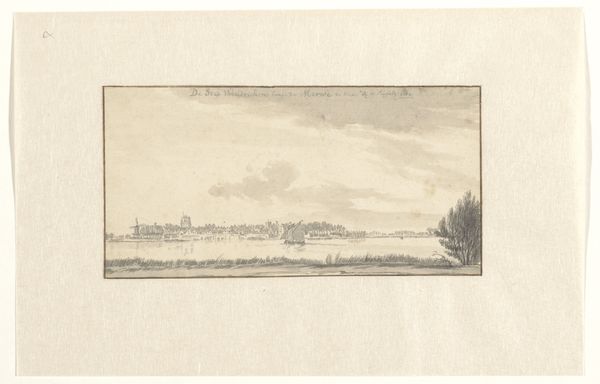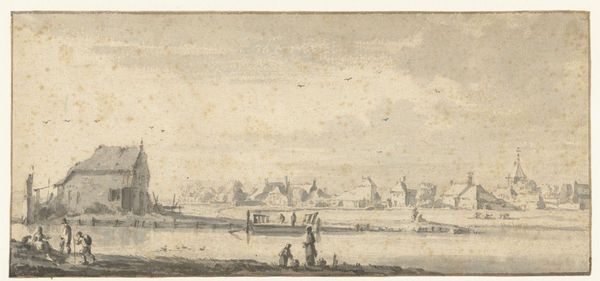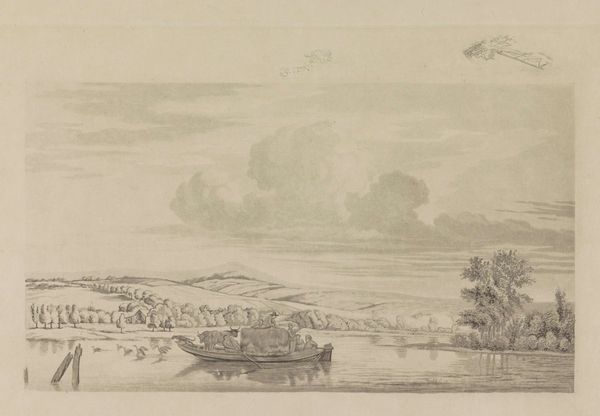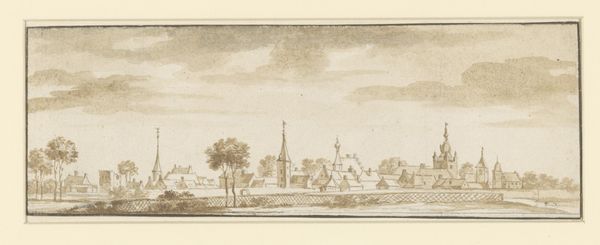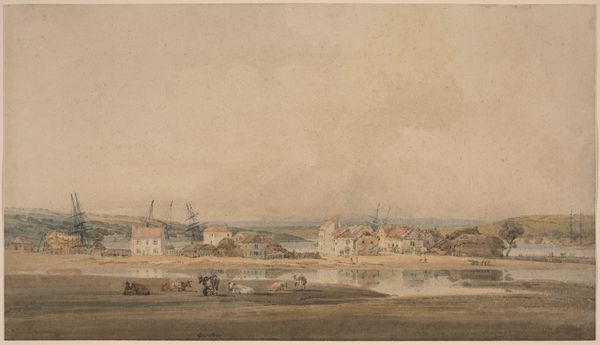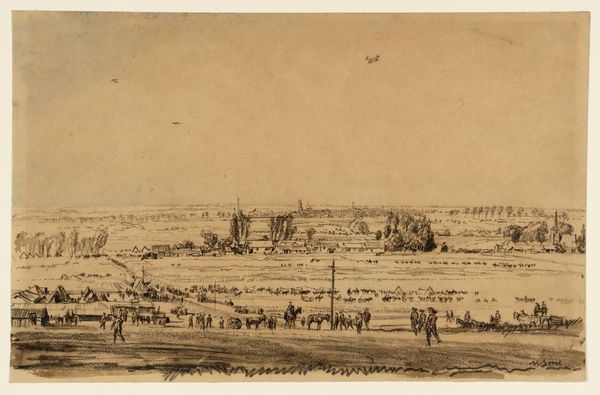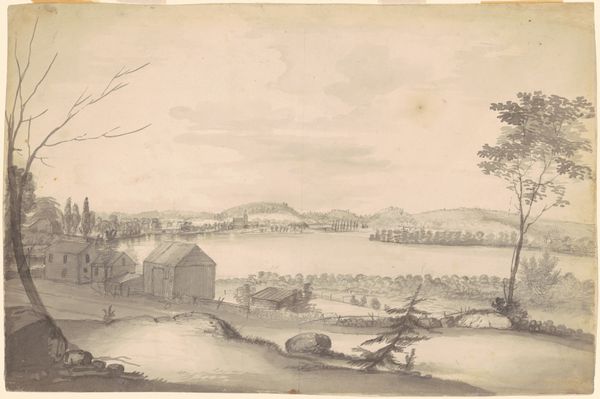![View of Houtewael near the Sint Anthoniespoort [recto] by Rembrandt van Rijn](/_next/image?url=https%3A%2F%2Fd2w8kbdekdi1gv.cloudfront.net%2FeyJidWNrZXQiOiAiYXJ0ZXJhLWltYWdlcy1idWNrZXQiLCAia2V5IjogImFydHdvcmtzL2JjMzJlMTg2LTJmYzUtNDM3MC1hZGI5LTUwMGE1YTExNTk3OC9iYzMyZTE4Ni0yZmM1LTQzNzAtYWRiOS01MDBhNWExMTU5NzhfZnVsbC5qcGciLCAiZWRpdHMiOiB7InJlc2l6ZSI6IHsid2lkdGgiOiAxOTIwLCAiaGVpZ2h0IjogMTkyMCwgImZpdCI6ICJpbnNpZGUifX19&w=3840&q=75)
View of Houtewael near the Sint Anthoniespoort [recto] c. 1650
0:00
0:00
drawing, paper, ink
#
drawing
#
dutch-golden-age
#
landscape
#
etching
#
paper
#
ink
#
realism
Dimensions: overall: 12.5 x 18.3 cm (4 15/16 x 7 3/16 in.)
Copyright: National Gallery of Art: CC0 1.0
Editor: So, this ink drawing is "View of Houtewael near the Sint Anthoniespoort," created by Rembrandt van Rijn around 1650. It's a Dutch Golden Age landscape, and I'm really struck by how simple it is, yet it captures so much of the feel of a wide, open space. What do you see in this piece from a historical perspective? Curator: This seemingly simple landscape actually reflects a very deliberate shift in Dutch art during the Golden Age. The Sint Anthoniespoort was a gate leading out of Amsterdam, and depicting this view wasn't just about pastoral beauty. Consider the economic boom of the time. How might depicting the land just outside the city walls, the source of Amsterdam's wealth, be seen as a form of civic pride and perhaps even national identity? Editor: I hadn't thought of it that way. I was just looking at the shack and the way the horizon stretches. So the *act* of depicting this ordinary scene, instead of some grand historical event, had political weight? Curator: Precisely. It's moving away from traditional, often religiously-themed art toward a focus on the everyday life and landscapes of the Netherlands. This coincides with the rise of a powerful merchant class and a growing sense of Dutch identity. Rembrandt, known for his portraits and biblical scenes, also engaged with this trend, suggesting the expanding appeal of this subject matter across various artistic and social milieus. What effect do you think it has on the contemporary viewer when the image of an otherwise unimpressive outpost gains increasing attention by painters and patrons? Editor: I guess I'd be thinking about our relationship with the landscape - appreciating the place where we live and where resources are created. It's like, elevating the ordinary, reminding us of its value. It shifts who and what matters in painting. Curator: Indeed. And through the artwork's public role, this subtle political message permeated society, influencing national and cultural perceptions and shifting norms on what art should reflect. It also solidified Rembrandt’s place in that changing landscape. Editor: I’ll definitely look at Dutch Golden Age landscapes differently now. It's not just a pretty scene; it's a statement. Curator: Exactly. Seeing art through a historical and social lens can unlock layers of meaning we might otherwise miss.
Comments
No comments
Be the first to comment and join the conversation on the ultimate creative platform.
